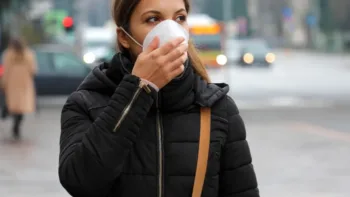
The COVID-19 pandemic, once seemingly under control, is now back in the spotlight as a recent surge in cases sweeps across many regions. Just when we thought life was returning to normal, the virus has evolved, bringing new challenges and uncertainties.
This latest wave, driven by a combination of more transmissible variants, vaccine fatigue, and relaxed public health measures, has caught many off guard. As we navigate this unexpected turn of events, it’s crucial to understand what’s happening and how it impacts our daily lives. Here’s what you need to know.
The Surge: What’s Happening?
In recent weeks, many countries have reported a significant increase in COVID-19 cases. Health experts attribute this surge to several factors:
- New Variants: The virus has mutated multiple times since it was first identified, and some of these new variants are more transmissible. The current surge is partly driven by these variants, which spread more easily among the population.
- Vaccine Fatigue: As the pandemic drags on, some people have become complacent about vaccinations and boosters. Lower vaccination rates, especially in certain regions, have left gaps in immunity, making it easier for the virus to spread.
- Relaxed Public Health Measures: Many places have lifted mask mandates, reduced testing, and rolled back other public health measures. While these changes have helped people return to a sense of normalcy, they have also contributed to the spread of the virus.
- Seasonal Factors: COVID-19, like other respiratory viruses, tends to spread more easily in colder weather when people spend more time indoors. This seasonal trend has played a role in the recent rise in cases.
Between late June and late July 2024, global hospitalizations rose by 11%, and ICU admissions increased by 3%. Additionally, deaths due to COVID-19 have seen a 26% uptick during this period. In the United States, over half the states have reported “very high levels” of COVID-19 activity, with new variants, such as KP.2 and KP.3, contributing to this surge.
Impact on Healthcare Systems
The recent COVID-19 surge has significantly strained healthcare systems worldwide, reminiscent of the pandemic’s early days. Hospitals are facing overcrowded emergency rooms and ICUs, with some reaching or exceeding capacity, forcing them to prioritize critical care and delay elective procedures.
Healthcare workers, already fatigued, are dealing with burnout and staffing shortages as the virus spreads among medical personnel. This renewed pressure extends to medical supplies like PPE and ventilators, while delays in non-COVID care raise concerns about long-term public health impacts.
Government Actions and Testing & Contact Tracing
In response to the surge, some governments have reintroduced or tightened public health measures, such as mask mandates and restrictions on gatherings. Testing and contact tracing efforts are being ramped up with increased availability of testing sites, extended hours, and digital tools for efficient contact tracing.
However, challenges like public fatigue and privacy concerns persist, requiring authorities to improve communication about the importance of these measures in controlling the virus.
What Does This Mean for You?
The recent surge is a reminder that COVID-19 is still a significant public health concern. Here’s what you can do to protect yourself and others:
- Stay Informed: Keep up to date with local COVID-19 data and follow any new guidelines from public health officials. Knowing the current situation in your area can help you make informed decisions about your activities.
- Get Vaccinated and Boosted: Vaccines remain one of the most effective tools we have against COVID-19. If you haven’t received your vaccine or booster yet, now is the time. Even if you’ve had COVID-19 before, vaccination can help protect you from severe illness caused by new variants.
- Wear a Mask: In areas with high transmission rates, wearing a mask in crowded or indoor settings can reduce your risk of getting or spreading the virus. Consider keeping masks on hand for situations where social distancing isn’t possible.
- Practice Good Hygiene: Continue to wash your hands regularly, use hand sanitizer, and avoid touching your face. These simple actions can help reduce the spread of the virus.
- Be Cautious with Social Gatherings: With the recent surge, it’s important to be mindful of the risks associated with large gatherings, especially indoors. If you’re planning to meet with others, consider doing so outdoors or in well-ventilated spaces.
- Monitor Your Health: If you feel unwell or develop symptoms of COVID-19, such as fever, cough, or loss of taste and smell, get tested and follow public health advice. Early detection can help prevent further spread of the virus.
Vaccine Updates
Vaccination remains crucial in combating COVID-19, with a focus on booster shots to enhance protection against emerging variants. Health experts emphasize the need for boosters as immunity from initial vaccine doses wanes.
New vaccines tailored to specific variants are in development, and governments are working to improve vaccine accessibility through mobile units and education campaigns to combat hesitancy.
Research into alternative protections, like nasal sprays, is ongoing, potentially offering additional defenses against the virus. Staying informed about these updates is key to protecting yourself and your community.
Where to Find Resources
If the COVID-19 surge continues, it’s important to know where to turn for reliable help and support. Your first stop can be local health departments, which offer up-to-date information on COVID-19 cases, testing sites, and vaccination clinics in your area. Many health departments have hotlines or websites where you can find resources specific to your community.
If you need medical advice or treatment, contact your healthcare provider or a local clinic. Telehealth services are widely available and can provide guidance on symptoms, testing, and treatment options without needing an in-person visit.
For those without health insurance, community health centers often provide low-cost or free services, including COVID-19 testing and vaccinations.
For mental health support, consider reaching out to a mental health professional, counselor, or support group. Many organizations offer virtual support services that can help you manage stress, anxiety, or depression related to the ongoing pandemic.
Finally, for financial assistance or other types of support, local government websites and nonprofit organizations can connect you with programs that provide help with rent, utilities, and food. Staying informed and seeking out these resources can help you navigate this challenging time with greater confidence and resilience.
By Admin –



